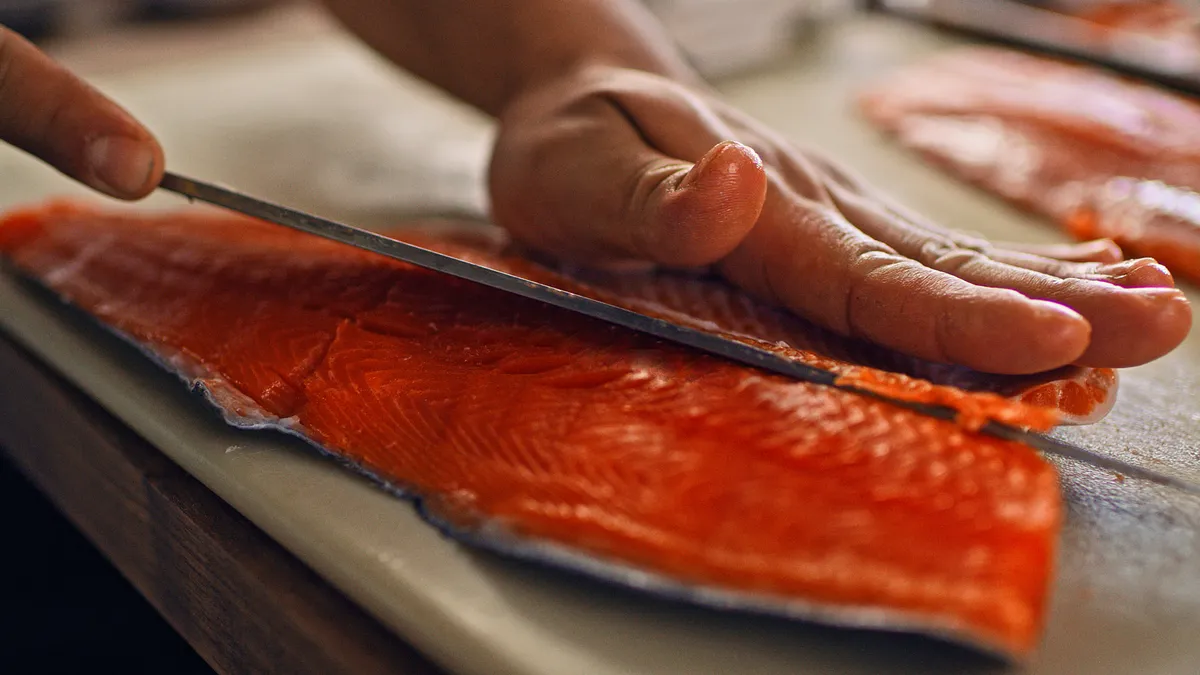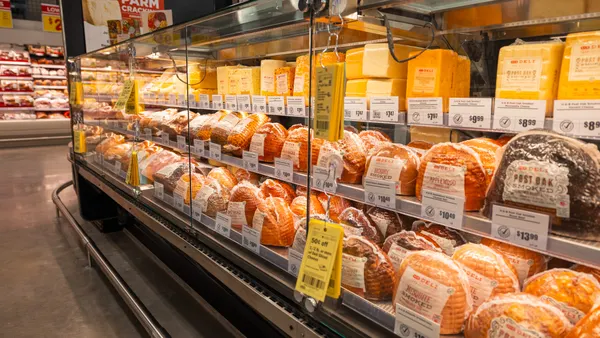Few departments in the grocery store benefit more from having well-trained, knowledgeable staff than the seafood department.
Training can help drive sales and enhance customer service levels, especially in the seafood department, where shoppers may have questions about sourcing and sustainability, as well as proper storage and cooking methods for different types of fish.
Research conducted by Datassential in 2021 confirmed that the seafood department sales staff are the No. 1 resource for consumers who are looking for information about seafood.
“These employees are critical to not only driving purchase, but also in elevating the purchase to a more profitable seafood species,” said Megan R. Rider, domestic marketing director at the Alaska Seafood Marketing Institute.
Price and quality are of course highly important to seafood shoppers, but service is also one of the top three key drivers when consumers are deciding where to shop for seafood, according to the 2022 Power of Seafood Report from FMI – The Food Marketing Association. The report also found that 77% of consumers want to become more knowledgeable about how to prepare and cook seafood.
“Shoppers expect knowledgeable staff that gives good advice and specializes in seafood, said Rider.
This is why ASMI recently launch a new Alaska Seafood U training tool, which retailers can use to train their seafood department staff about what makes wild, natural and sustainable Alaska seafood so unique.
Both retailers and shoppers are hungry for information about seafood — 93% of retailers said they would like more education about seafood species and types, according the 2022 FMI Power of Seafood report, and 73% would like more information about sustainability and environmental impact claims.
Knowledgeable, well-trained staff understand what their shoppers are looking for, which drives positive customer interactions. For example, knowing that sustainability, wild-caught and origin are top priorities for consumers can help staff promote the items their customers are seeking, Rider said.
ASMI’s Seafood U
ASMI’s new Seafood U offers a series of seven short online video training courses that staff can complete at their own pace, each of which is followed by a quiz.
“Our intent is to provide education in brief, digestible chunks of information, thus the seven modules,” said Rider. “A quiz for each section ensures information retention and the flexibility to leave off where a user started and go at their own pace are also critical components to making Alaska Seafood U as user-friendly as possible.”
Topics covered include background on Alaska fishing, the healthful properties of seafood, and lessons about the different species of Alaska salmon, whitefish and shellfish and how they are harvested. All of the videos showcase Alaska’s wild beauty and seafood species that inhabit its waters, with easy-to-follow narration filled with useful information for retail seafood department staff.
The series begins with a four-minute overview of Alaska’s abundant fisheries and how they are managed responsibly, including information about the Responsible Fisheries Management (RFM) certification and others. It also includes information about the benefits of the freezing process for wild-caught Alaska seafood.
A second video explains the nutritional qualities of wild-caught seafood from Alaska, followed by a series of five videos that explain the differences among the different types of Alaska salmon, whitefish and shellfish, including how they live, how they are caught and how they can best be enjoyed at the dinner table.
The training reflects ASMI’s deep understanding of the seafood shopper’s needs, and the evolution of the Alaska seafood to encompass the origin story of the fisherman, Rider explained.
“It was important that the training both help retail staff while telling our brand story – Generations of Alaska fishermen and fishing families working side by side among the rugged, pristine beauty of the last frontier, responsibly harvesting the world’s finest wild and sustainable seafood.”
Retail associates can track their progress online and return to unfinished modules, so they can work on completing the course whenever and wherever it is convenient for them. Once a retail associate completes the course, they receive a completion certificate signifying their graduation from Alaska Seafood U.
“Graduates from Alaska Seafood U will walk away with an understanding of all the Alaska seafood species, what makes Alaska seafood sustainable as well as the well-documented nutritional benefits,” said Rider.
Retailers can implement promotions based on the content and incentivize staff to enroll in and complete Alaska Seafood U. ASMI can also provide support through either promotional dollars or merchandising and swag.
Recipes drive seafood sales
Another key motivator that drives consumers to purchase seafood is recipes. In fact, recipes provided by the store are the No. 1 choice for shoppers looking to eat more seafood at home, according to ASMI research.
“We’ve partnered with retailers who engage their staff in cooking competitions to learn how to cook seafood,” said Rider. “They then take their learnings back to their shopper and share recipe ideas. Every seafood staff member should have a handful of their favorite recipes, or rubs or sauces, that they recommend to their customers.”
Retailers can encourage their seafood staff to work with the onsite or corporate retail dietitian on recipe development. That level of engagement can translate directly into incremental sales gains for retailers, and more importantly, create a positive impression among customers seeking to put delicious and nutritious food on the table for themselves and their families.
“We’ve found that when the seafood staff is involved in the creation, the sell to the shopper is an easy one,” said Rider.
In addition, ASMI’s Cook it Frozen® campaign provides retailers with recipes, how-to videos and other materials to teach consumers how to prepare seafood directly from frozen.
Training is important for retailers seeking to dive sales and provide high levels of customer service in the seafood department. ASMI’s Seafood U provides tools retailers can use to achieve those goals.











